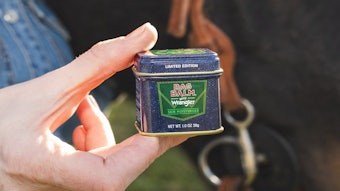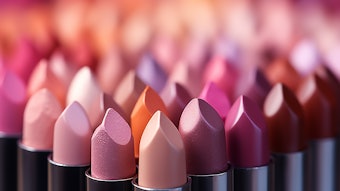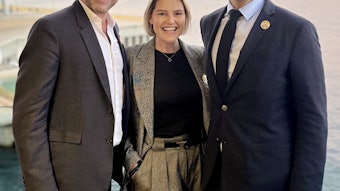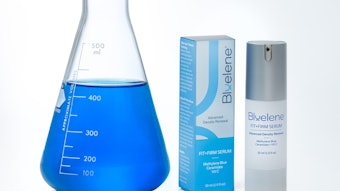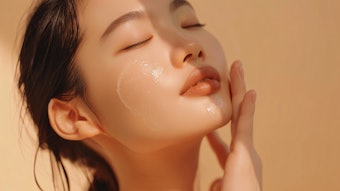
 Bubble, a brand beloved by the industry's youngest consumers, has taken a proactive approach to the issue of kids and skin care. Here, founder Shai Eisenman tells all.
Bubble, a brand beloved by the industry's youngest consumers, has taken a proactive approach to the issue of kids and skin care. Here, founder Shai Eisenman tells all.
California Moves to Ban Anti-Aging Products for Minors Amid Growing Concerns
First, some context. Lawmakers are already getting involved in the Gen Alpha beauty frenzy. As previously reported, California State Assemblymember Alex Lee has introduced a bill to ban the sale of anti-aging cosmetic products, such as those containing retinol, glycolic acid, and vitamin C, to minors under 18. The legislation aims to address concerns about the growing trend of children as young as eight using these products, marketed for adult skin, despite potential risks like irritation, rashes, and long-term damage.
Lee criticized the beauty industry for exploiting young consumers and stressed the need for regulation, as children’s skin is more sensitive and lacks the protection of adult skin. The issue has gained international attention, with countries like Sweden implementing age restrictions, while U.S. families have increasingly purchased skin care products for minors, highlighting the urgency of this measure, per Lee.
Bubble's Gen Alpha Game Plan: Q&A
Bubble advises against using certain potent products on faces under 14. With social media driving a surge in teen skin care, 70% of teens use products without understanding their ingredients or risks. Here, Eisenman discusses her brand's stance and the rise of Gen Alpha.
How do you see California’s proposed legislation on retinol and retinoid product sales impacting the skin care industry, particularly for brands targeting younger consumers?
Eisenman: This legislation is important because it forces the industry to acknowledge something we’ve been talking about for years—not all skin care is appropriate for younger skin.
Young consumers are more interested in skin care than ever, but the reality is, many of the products they’re using were never designed for them. They’re marketed in a way that makes it seem like stronger is better, when in reality, younger skin needs gentle formulations, not aggressive actives.
As a founder, I’ve always felt responsible for making sure Bubble does this the right way. And as a parent, it’s even more personal. My daughter is in this age group. I see firsthand how easily young consumers can be influenced to use things they don’t need—just because it’s trending, just because no one told them otherwise.
That’s why at Bubble, we make products for all ages, but we only recommend certain ones for younger consumers. And we don’t just assume they’re safe—we’re one of the only brands that has clinically tested the products we recommend for ages 8-13.
For young skin, a simple, protective routine is the best approach:
- A gentle cleanser
- A hydrating moisturizer
- A mineral sunscreen—non negotiable
This legislation is a wakeup call for brands that have been marketing without thinking about what’s actually appropriate. The industry needs to do better—to focus on education, transparency, and real safety. This is a step in the right direction, but there’s still a long way to go.
What steps has Bubble Skincare taken to ensure transparency and safety for teen consumers in an increasingly complex skin care market?
Eisenman: The industry moves fast. New products, new trends, new ingredients—there’s always something. But for younger consumers, that kind of constant change isn’t always a good thing. What they need isn’t more, it’s clarity.
That’s why from the start, Bubble has been built on transparency, real safety testing, and education first.
- We clinically test the products we recommend for younger consumers. Almost no one else does this. But we do, because young consumers deserve more than just marketing claims—they deserve actual data to back up what they’re using.
- We focus on what’s necessary, not what’s trendy. Younger skin doesn’t need retinol, heavy exfoliants, or intense actives. It needs a simple, effective routine that keeps the skin strong and healthy.
- We make everything clear. No misleading claims, no overcomplicated ingredient lists—just straightforward information about what each product does and who it’s for.
We’re doing what should have been done years ago—giving young consumers and their parents real, honest guidance.
With social media driving a surge in teen interest in skin care, how can brands like Bubble play a role in educating young consumers about ingredient safety and proper usage?
Eisenman: Social media is the biggest influence in skin care right now. It’s how young consumers learn about products, routines, and ingredients. But it’s also why there’s so much confusion.
Young consumers are being told they need everything—retinol, acids, serums, masks—when really, most of it isn’t necessary for them. The best thing they can do for their skin is build a strong foundation first.
At Bubble, we don’t just sell skin care—we educate. We show up where young consumers are, and we make it easy to understand:
- What their skin actually needs at this stage. Not what’s trending. Not what an influencer is using. Just what’s right for them.
- How to build a smart routine. Before layering on treatments, young consumers need to focus on the basics: cleanser, moisturizer, and mineral sunscreen. That’s it.
- How to avoid overdoing it. More products don’t mean better skin. We help young consumers understand that skin care is about consistency, not complication.
I see it firsthand—my daughter and her friends are paying attention to these conversations. We have a responsibility to make sure the information they’re getting is actually right.
Why did Bubble decide to include age guidance on products, and how has that been received by teens and parents?
Eisenman: Because no one else was doing it, and it was needed.
For years, skin care has been sold like it’s one-size-fits-all—but it’s not. Younger skin has different needs, and it shouldn’t be up to teens and their parents to figure that out on their own.
- We knew from the start that if we were going to be a brand young consumers trust, we had to do the work to back up our recommendations.
- We clinically tested the products we recommend for ages 8-13. Not just for safety, but to make sure they actually support younger skin.
- We provide clear age guidance. Our products are safe for all ages, but we help younger consumers understand what’s right for them now and what they might need later.
We make it easier for parents. Instead of trying to decode skin care labels, parents can trust that our recommendations are based on simplified routine, and actual science, not marketing.
Parents feel relieved, younger consumers feel more confident in their choices, and there’s finally real clarity in an industry that’s been way too confusing for way too long.
What long-term changes do you hope to see in the skin care industry when it comes to regulation and education for younger audiences?
Eisenman: The industry needs to stop treating young consumers like just another audience to sell to.
For too long, skin care has been marketed without enough thought about what’s actually right for different age groups. That needs to change.
Here’s what I want to see happen:
- Brands taking more responsibility. If you’re marketing to younger consumers, you should be clinically testing for them. If you’re not, you shouldn’t be making recommendations.
- More education, less confusion. Young consumers shouldn’t have to rely on social media trends to figure out what’s right for them. Brands need to step up and provide real, accessible information.
- A shift toward smart, simple routines. The best thing a young consumer can do isn’t layering on actives—it’s building a strong foundation: cleanser, moisturizer, mineral sunscreen.
That’s exactly what we do at Bubble. We test our recommendations, we educate first, and we make sure young consumers actually understand what they’re putting on their skin.
At the end of the day, this isn’t just about selling products—it’s about making sure young consumers are protected, educated, and set up for lifelong skin health.



